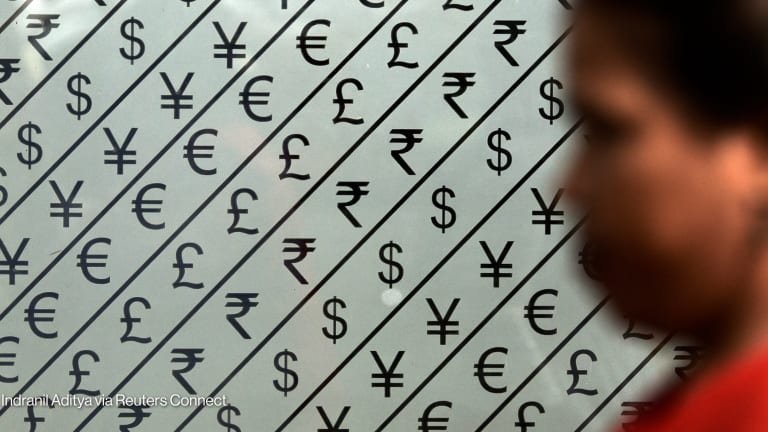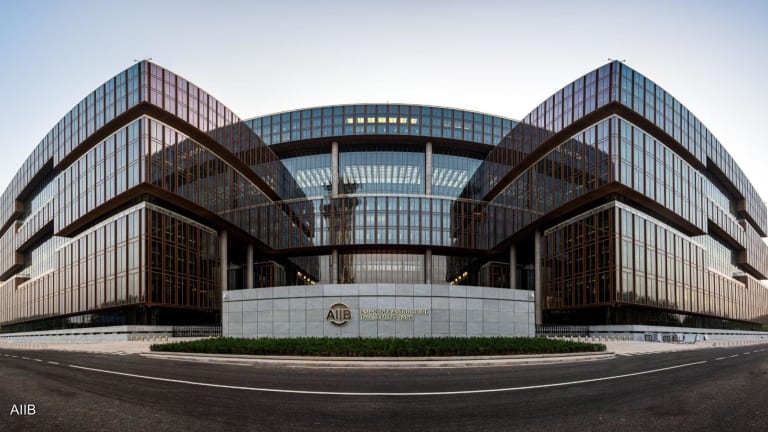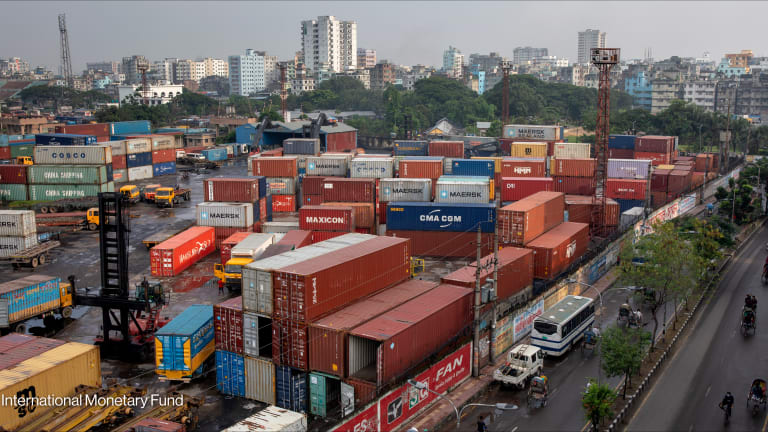Co-financing boosts ADB assistance in 2014
Increased emphasis on co-financing helped raise ADB’s total development financing to new heights in 2014. Devex takes a closer look at the numbers to see where the bank spent its money that year.
A 28 percent surge in co-financing pushed development assistance from the Asian Development Bank to new heights in 2014. In its latest annual report released ahead of the annual meeting in Baku, Azerbaijan, ADB notes that it approved $22.93 billion in development financing to Asia and the Pacific that year, up 8.4 percent from 2013’s $21 billion in net assistance to the region. Disbursements from the bank’s Ordinary Capital Resources, one of ADB’s two main financial instruments, meanwhile increased 17 percent year on year to $10.4 billion — its highest approved financing over the past five years. “These numbers emphasize ADB’s push for improved project implementation and for greater private sector participation and co-financing schemes,” President Takehiko Nakao said in the report. “My resolve is that ADB remains proactive and responsive, striving for even greater achievements in poverty reduction as we approach 2020.” This push for greater private sector cooperation and partnership has prodded ADB to establish its own public-private partnership office last year to advise countries and companies on the best practices on PPPs. Some of the partnerships the bank focused on last year include a pioneer $2 million investment in a private-run educational institution in India and $16.5 million to boost private agribusiness projects in Cambodia and India, among others. Energy, transport and urban infrastructure were the three most prioritized sectors in 2014, having been allocated $6.65 billion, $4.36 billion and $2.29 billion in development financing, respectively. Including the $1.79 million disbursed for ICT projects, infrastructure activities accounted for 58 percent of the bank’s total development financing in 2014. Spending on health, education and rural development — considered integral sectors especially in the lead-up to the adoption of the sustainable development goals later this year — amounted to $2.46 billion or about 10.7 percent of ADB’s total assistance in 2014. Finance, public sector management, industry and trade, and other multisector priorities accounted for the remaining development funds disbursed that year. Below we look at how ADB disbursed development financing per region in 2014. Southeast Asia $7.18 billion: Brunei, Cambodia, Indonesia, Laos, Malaysia, Myanmar, Philippines, Singapore, Thailand, Vietnam Home to two of the world’s current economic bright spots, Indonesia and the Philippines, Southeast Asia remains the biggest recipient of ADB investments in 2014, receiving $7.18 billion that year. In terms of operations, ADB approved $2.99 billion in sovereign lending to the 10-country group, along with $1.6 billion in co-financing. Technical assistance amounted to $71.66 million. Grants and loans largely went to public sector management programs (41 percent), while transport, education and finance each accounted for 14 percent. Among the key highlights last year include the approval of a new country partnership strategy with Cambodia. Its flagship project focuses on rural-urban-regional links and human and social development through a 279 kilometer road improvement project across nine provinces. In Indonesia, the bank approved a $400 million loan to support reforms to improve public and private investments, while in Myanmar an $80 million transport project was given the green light to rehabilitate 54.5 kilometers of road between Yangon and other provinces. Some of the challenges for the 10 nations include the task of sustaining growth while reducing bottlenecks on key constraints, including public sector management reforms, infrastructure and social services, and mobilization of co-financing with this year’s ASEAN Economic Integration in mind. South Asia $6.75 billion: Bangladesh, Bhutan, India, Maldives, Nepal, Sri Lanka Total ADB investments in South Asia amounted to $6.75 billion in 2014. For 31 projects, ADB approved net assistance of $4.05 billion, which was supported by $1.14 billion in co-financing. Technical assistance amounted to $49.39 million, which focused on areas key to achieving sustainable and inclusive growth, including infrastructure, energy security, urban development and education. India — the region’s biggest economy — is also the largest borrowing member country, comprising 54 percent of total loans. Bangladesh and Sri Lanka, meanwhile, ranked second (22 percent) and third (11 percent), respectively. In terms of sector, 79 percent of ADB development financing to South Asia funded infrastructure projects. Among the notable achievements in the region that year is the $1.63 billion boost in transport investments, including $500 million for the region’s first cross-border road project that links northeast India to Myanmar, among others. In Sri Lanka, an $800 million conversion project aims to transform rural roads to farm-to-market roads. Investments of $180 million to expand national grid capacities in Nepal and $158.5 million in clean energy projects in Bhutan and Maldives were highlighted as well. Central and West Asia $5.21 billion: Afghanistan, Armenia, Azerbaijan, Georgia, Kazakhstan, Kyrgyz Republic, Pakistan, Tajikistan, Turkmenistan, Uzbekistan ADB assistance to Central and West Asia — considered the bridge between Europe and Asia — amounted to $5.21 billion in 2014. The bank approved $2.75 billion in new lending that year, supported by $1.16 billion in co-financing and $38.16 million in technical assistance. Energy comprised the lion’s share of bank assistance, accounting for 57 percent of approved projects in 2014, followed by transport (25 percent), public financial management (8 percent), environment and natural resources (5 percent), urban services (3 percent) and emergency assistance (2 percent). Some of the key highlights include increased cooperation with Azerbaijan — host of the bank’s annual meeting this year. The cooperation will mainly focus on transport, energy, water, and other urban infrastructure and services. Included in the list of approved projects are the reconstruction of bridges and rehabilitation of local roads in the Ganja-Gazakh region, and the construction of 30 kilometers of highway between Jalilabad and Shorsulu. East Asia $3 billion: China, Mongolia ADB’s total development assistance to East Asia amounted to $3 billion last year, consisting of 14 loan and grant projects worth $1.66 billion, $167.48 million in co-financing and $29.41 million for 52 technical assistance programs. Transport was the highest-funded sector in the region, accounting for 49 percent of ADB investments in 2014. This was followed by urban and social services (36 percent), energy (9 percent) and natural resources and rural development (6 percent). As one of only two countries supported in the region, China continues to dominate economically while still coping with social and sustainable development challenges. There is a need to develop new engines of growth for inclusive development, environmental protection, inequality, finance sector regulation, local government debt and private investment in state-owned enterprises. Mongolia, on the other hand, suffered a growth slump due mainly to a decrease in foreign direct investments. Diversifying its economy away from mining and providing sufficient quality jobs are needed to stimulate growth. Some of the activities ADB is supporting in the country include a $170 million transport project to construct 293 kilometers of road linking Mongolia to China and Russia, and a $25 million pledge to promote technical and vocational education. Pacific $200 million: Cook Islands, Fiji, Kiribati, Marshall Islands, Micronesia, Nauru, Palau, Papua New Guinea, Samoa, Solomon Islands, East Timor, Tonga, Tuvalu, Vanuatu Total ADB development financing to the Pacific amounted to about $200 million in 2014. This covered 14 lending and grant projects worth $185.75 million, $30.94 million in co-financing, and $26.65 million for 25 technical assistance projects. As in most other regions, the transport sector received the bulk of investments that year (67.7 percent), followed by energy (18 percent) and public sector management (6.2 percent). The Pacific’s two largest economies — Papua New Guinea and East Timor — buoyed the region’s growth, which improved 5.3 percent in 2014. ADB plans to better connect the countries in the Pacific through investments in transport, communications and service delivery. Some of the key highlights include the Manila-based institution’s decision to resume full engagement with Fiji after the democratic elections in 2014, committing $100 million to rehabilitate and upgrade roads and ports. ADB also approved $11.78 million for a major transport project to climate-proof 100 kilometers of road in East Timor and $187.48 million for the expansion of Lae Port in Papua New Guinea. Check out more funding trends analyses online, and subscribe to Money Matters to receive the latest contract award and shortlist announcements, and procurement and fundraising news.
A 28 percent surge in co-financing pushed development assistance from the Asian Development Bank to new heights in 2014.
In its latest annual report released ahead of the annual meeting in Baku, Azerbaijan, ADB notes that it approved $22.93 billion in development financing to Asia and the Pacific that year, up 8.4 percent from 2013’s $21 billion in net assistance to the region. Disbursements from the bank’s Ordinary Capital Resources, one of ADB’s two main financial instruments, meanwhile increased 17 percent year on year to $10.4 billion — its highest approved financing over the past five years.
“These numbers emphasize ADB’s push for improved project implementation and for greater private sector participation and co-financing schemes,” President Takehiko Nakao said in the report. “My resolve is that ADB remains proactive and responsive, striving for even greater achievements in poverty reduction as we approach 2020.”
This story is forDevex Promembers
Unlock this story now with a 15-day free trial of Devex Pro.
With a Devex Pro subscription you'll get access to deeper analysis and exclusive insights from our reporters and analysts.
Start my free trialRequest a group subscription Printing articles to share with others is a breach of our terms and conditions and copyright policy. Please use the sharing options on the left side of the article. Devex Pro members may share up to 10 articles per month using the Pro share tool ( ).
Lean Alfred Santos is a former Devex development reporter focusing on the development community in Asia-Pacific, including major players such as the Asian Development Bank and the Asian Infrastructure Investment Bank. He previously covered Philippine and international business and economic news, sports and politics.








